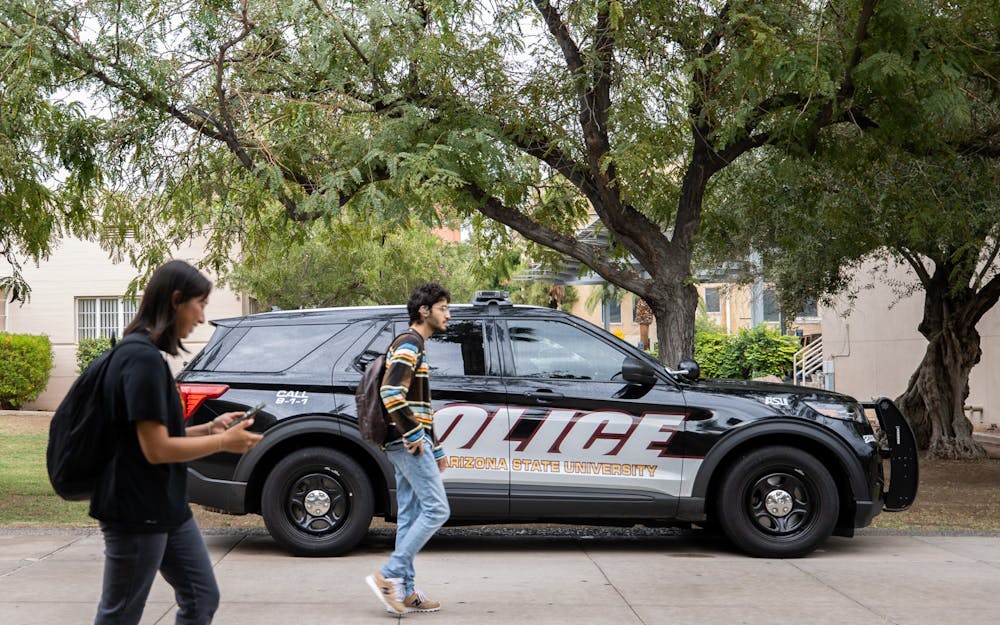As fiery political rhetoric about crime is spread online, an estimated 270,000 homicide or missing person cases sit cold in the U.S since 1980, and thousands more unsolved cases are added every year.
You might share posts that blame homicides on the unregulated accessibility of guns. Or maybe something that points to understaffed and underfunded law enforcement agencies. Perhaps you blame drugs. Or toxic masculinity. Or the breakdown of the traditional family. Or generational trauma.
If you’re convinced some of these are to blame, you’re likely angered by the mere suggestion of the others. But amplifying those divisive messages does nothing to address the problem and ignoring how it might affect the families of victims is callous and exploitative.
While no universal definition exists, a case is considered cold when there are no more leads, and usually, after a long period of time has passed – typically between a year and four years, according to the National Institute of Justice. Each cold case is an unresolved crime, leaving families who are already struggling to make sense of a world that took away their family member to process another unthinkable injustice: when that tragedy is seemingly forgotten.
“A lot of these families, a number of them, their world stopped the day their loved one was murdered,” said Ryan Backmann, founder and executive director at Project: Cold Case, a nonprofit working with families and law enforcement to help solve cold cases through providing publicity to all cases, not just those in the public eye.
Backmann’s father was killed in Jacksonville, Florida in 2009, and he started Project: Cold Case in 2015. He’s found helping other families who are grappling with loss to be cathartic, but he is often reminded of his own grief.
“Every time there’s my birthday, every time there’s a holiday, those memories and what we are missing out on are brought to the forefront,” Backmann said.
Backmann spoke at the first annual Cold Case Symposium, which was held at the New College of Interdisciplinary Arts and Sciences on ASU’s West campus on Sept. 23 during National Forensic Science Week.
Lauren Weidner, assistant professor in the School of Mathematical and Natural Sciences, organized the event. She prefers to focus on advocacy and awareness.
“Nobody wants cases to go cold, there’s probably a bunch of different reasons for why they did. And there’s probably a lot of people blaming people,” Weidner said. “Playing the blame game never really helps anything move forward.”
People may assume, as I did, that science and technological advancements would help improve clearance rates over time, but they have actually gone down over the past 60 years, according to the Murder Accountability Project. Last year just over half of the over 14,000 homicides were solved, compared to over 70% in 1980 and almost 85% in 1965.
The issue affects Arizona, too. Since 1980, the Phoenix Police Department has closed about 60% of homicides in the city. Between 2010 to 2020, Phoenix closed 1,014 of 1,454 homicides, a rate of 69%.
Merely determining an accurate count of cold cases is a challenge. These numbers are based on the FBI’s Uniform Crime Report, which is only as accurate as the information provided by agencies, which the American Civil Liberties Union warns can be manipulated. There are over 18,000 law enforcement agencies in the U.S., and with no standard definition of cold cases, departments submit counts to the FBI based on different criteria.
To address the lack of police data transparency which contributes to this issue and other issues of police accountability, The Vera Institute of Justice created a Police Data Transparency Index. The institute assigned scores to 94 cities and counties, covering a quarter of the U.S. population earlier this year, using the same crime reporting criteria used to track cold cases.
Fourteen jurisdictions received a zero because they do not provide crime report information at all. On a scale of 100, the median score was 44. Not reporting this information makes it impossible to understand the full extent of the issue, which makes efforts to address it more difficult.
However we choose to count, thousands of families every year are left with no explanation, no closure, and nothing but perpetual grief. The number of cold cases will never be zero. Despite what we see on television, sometimes cases are unsolvable. There’s no evidence. No witnesses come forward.
But sometimes just passing along information can have an impact. Like the signs in New York subways say, "If you see something, say something," said Weidner.
“We don’t necessarily need to reach a million people, we need to reach one,” said Backmann. “But we may have to go through a million to get to that one.”
There must be more that can be done than waiting for that one-in-a-million chance of a witness coming forward after years of silence.
I’m not advocating for increased funding, though. Project: Cold Case advocates for departments to have a dedicated Cold Case unit. Only 7% of departments today do, according to the NIJ. Nor do I place the sole blame on police departments, though building community trust and providing more data transparency would likely improve clearance rates.
We need to cut through the politics of the law and order debate and focus on addressing this growing problem.
By liking the Project: Cold Case Facebook page, you can expand their reach. Learn about the cold cases where you live, and whether local departments have a dedicated team to continue investigations. Call for department leaders to prioritize data transparency and cold cases.
Also, the next time there is extensive coverage around a single unsolved tragedy, consider how that attention might affect the families of so many others whose world stopped while the rest of the world kept on going.
Edited by Sadie Buggle, Wyatt Myskow and Grace Copperthite.
Reach the columnist at jdbrow52@asu.edu and follow @jamesbrownasu on Twitter.
Editor's note: The opinions presented in this column are the author's and do not imply any endorsement from The State Press or its editors.
Want to join the conversation? Send an email to opiniondesk.statepress@gmail.com. Keep letters under 500 words and be sure to include your university affiliation. Anonymity will not be granted.
Like The State Press on Facebook and follow @statepress on Twitter.

James Doyle Brown, Jr. is an opinion columnist at The State Press. He is also in his final semester as a graduate student studying investigative journalism at the Walter Cronkite School of Journalism and Mass Communication. He has previously reported for the State Press politics desk, The Howard Center of Investigative Journalism and Carnegie-Knight News21.




